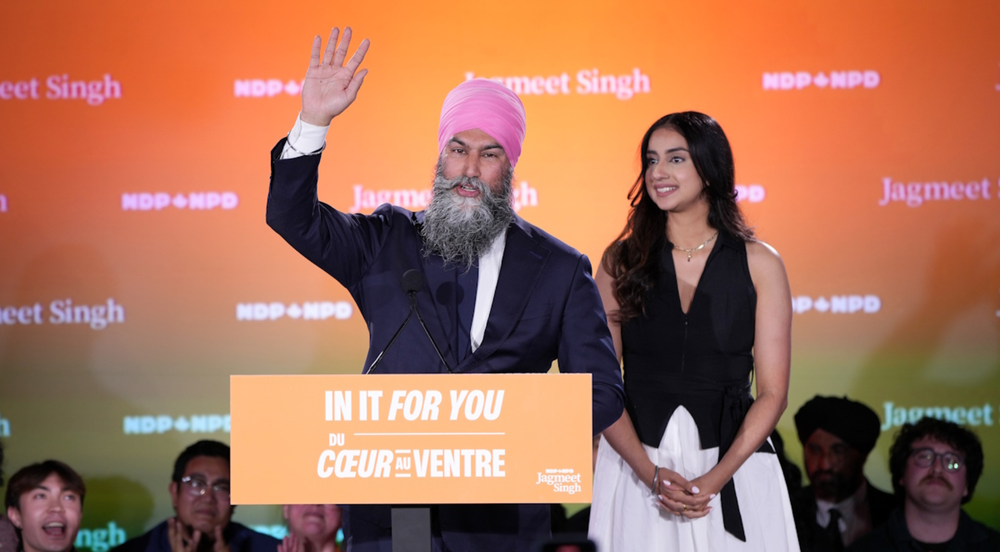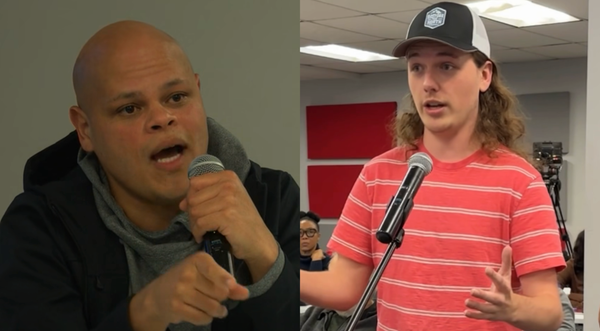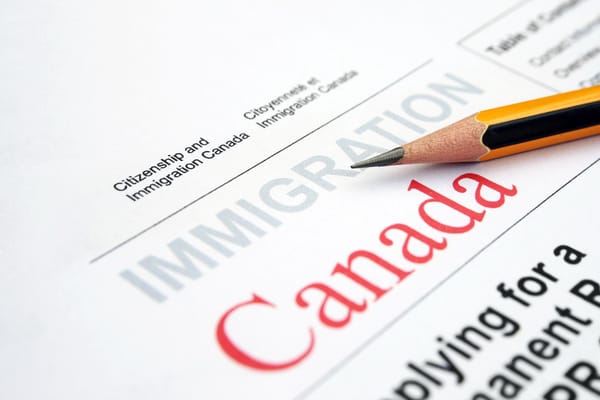ADAMS: Quotas Won’t Save the NDP. Trusting Members Will.
Following his loss in the 2025 federal election, former NDP leader Jagmeet Singh addressed supporters at campaign headquarters alongside his wife, Gurkiran Kaur. Photo credit: THE CANADIAN PRESS
The New Democratic Party has officially kicked off its 2026 leadership race. With Jagmeet Singh having stepped aside, this is the most important contest for Canadian progressives in over a decade. The NDP is in trouble after years of bleeding support, and whoever wins in Winnipeg next March will set the course for the party's long-term survival—or its permanent irrelevance.
But instead of opening the door to new ideas, new leaders, and new energy, the party's rules for the contest look like a checklist designed to keep people out. They're not just restrictive. They're self-defeating.
Yes, some of the requirements make sense. Any party with aspirations to lead Canada should demand regional support from a prospective leader.
The rule requiring 50 nomination signatures from each major region—Atlantic, Quebec, Ontario, the Prairies, and BC/North—is fair. It ensures that a would-be leader isn't just a local hero but can demonstrate appeal across the country. That's healthy and democratic. But then come the quotas.
Under the rules, candidates must gather 500 signatures from party members. Half must be from people who are not cis men. At least 100 must be from so-called “equity-seeking groups” (a term that could only have been dreamed up by someone in an HR department, not a union hall). Ten percent must come from youth.
On paper, it sounds like a well-meaning attempt to protect diversity and prevent another leadership race dominated by middle-aged white men. In practice, it's a recipe for exclusion, dysfunction, and the entrenchment of establishment favourites.
The NDP is supposed to be the party of workers, but tell me—when was the last time you heard a grocery clerk, a postal worker, or a factory hand refer to themselves as part of an “equity-seeking group?” Working people and legitimate activists don't talk like this. That language is cooked up in Ottawa meeting rooms and academic circles by out-of-touch, privileged suits. And it shows.
The problem isn't that diversity doesn't matter. Representation absolutely matters. It matters a lot. But you don't build it through quotas cooked into the nomination process of a leadership race. You build it through organizing, through trust, and through being present in people's lives.
By hard-coding demographic quotas into the rules, the NDP risks tying itself into knots that will frustrate members, discourage fresh leadership bids, and ultimately produce candidates who tick boxes but fail to inspire.
A Hypothetical That Isn’t Far-Fetched
Picture this: a transgender woman runs for leader of the NDP. She's smart, tough, charismatic—the next Jack Layton. She could unite the party, win back working-class voters, and stand up to the Conservatives in a way that no one else could.
But here's the catch. She can't gather enough signatures from one of the prescribed categories. Maybe she doesn't get enough from religious minorities, or from youth, or from one of the regions. Despite broad support, despite being the candidate who could actually change the party's fortunes, she's disqualified before the race even begins. That's not inclusion. That's exclusion wearing an inclusive mask.
And let's be blunt: some “equity-seeking groups” don't even agree with each other. Plenty of religious conservatives, including within racialized communities, oppose LGBTQ rights. So what happens when one candidate is supported strongly by queer activists but struggles with more socially conservative groups—or vice versa? These rules could intensify divisions within the party rather than heal them.
A Shrinking Membership
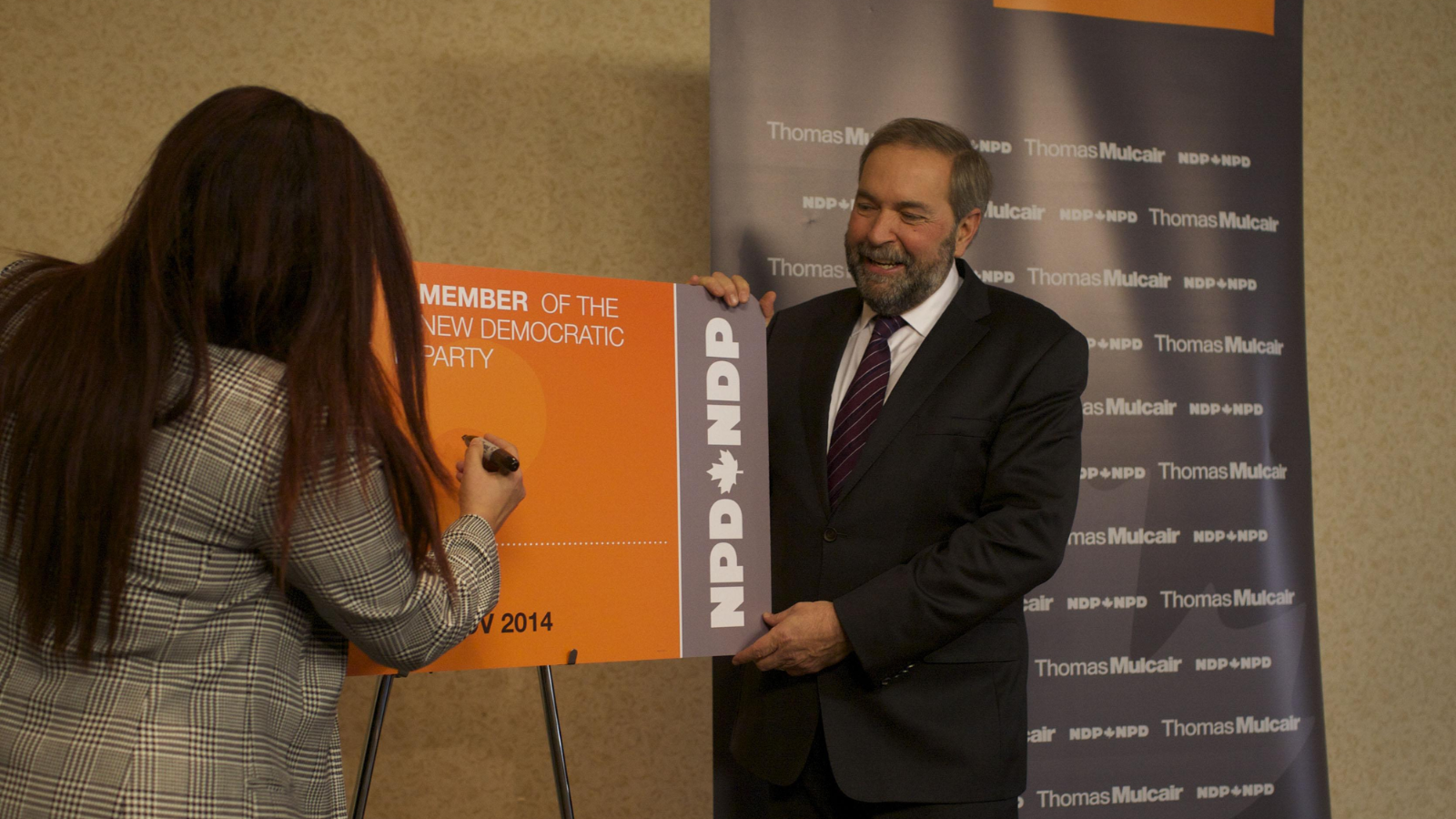
Former NDP leader Thomas Mulcair holds a giant NDP membership card while Maria Mourani signs it during an event. Photo credit: Thomas Mulcair/X
The timing exacerbates the situation. From September 2024 to April 2025, the NDP suffered its worst losses in history, bleeding members and sinking in the polls. They're in no position to demand quotas on signatures when they're struggling to fill rooms at local meetings as is.
Do they even have enough active members to make these thresholds workable? When your pool is small, quotas don't ensure diversity. They just make it harder for anyone outside the establishment to run. These rules tilt the playing field in favour of candidates with existing networks of insiders—those who can phone up friendly riding association presidents, those who already have name recognition among the shrinking base. The bold outsider with vision? They're out of luck.
Would Jack Layton, the party's most beloved leader in modern memory, have been able to win under these rules? What about Ed Broadbent, Thomas Mulcair, or Jagmeet Singh himself? I won't speculate too far. But I will say this: the NDP of pre-2025 was about broadening the tent, not narrowing the gate.
Representation vs. Quotas
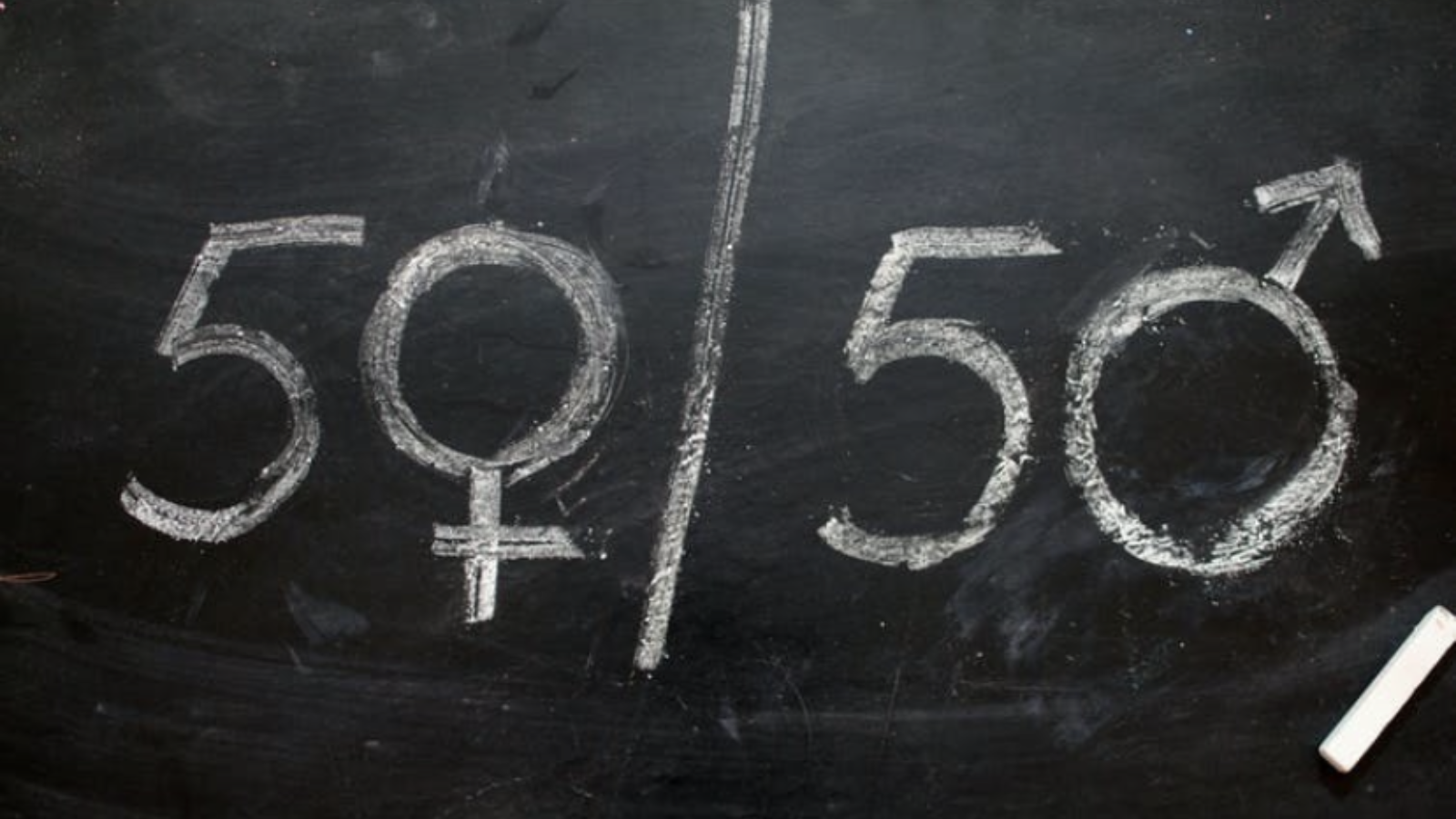
Chalk drawing on a blackboard showing "50/50" with the female symbol inside the first zero and the male symbol inside the second zero, representing gender equality. Photo credit: ESGmark
Representation matters. But representation isn't the same as quotas. Quotas can create a façade of diversity while actually excluding people. Real representation means creating a party culture that is open, accessible, and empowering. It means doing the hard work of reaching communities that haven't historically felt welcomed by the NDP. It means letting members choose the leader who inspires them most, not the leader who satisfies a set of bureaucratic requirements.
Currently, the NDP rules appear to have been written by individuals who prioritize being perceived as progressive over actually building a progressive movement.
And that's dangerous. Because enemies of labour—Conservatives, the right-wing establishment media, corporate lobbyists—will be delighted to see the NDP trip over its own shoelaces. Nothing would please them more than to watch the party that once carried the banner of working people tie itself up in rules that prevent strong leaders from even making it onto the ballot.
It's as if the NDP has forgotten who it's up against. They're up against powerful interests that will exploit any weakness, and the party has just handed them a gift.
The Labour Party, Not the HR Department

Former NDP leader Jagmeet Singh stands on the picket line with Radisson Blu Vancouver Airport workers holding "On Strike" signs in solidarity with their labour action. Photo credit: Jagmeet Singh/X
The NDP's raison d’être is representing labour. That means truck drivers and teachers, nurses and carpenters, warehouse workers and cashiers. It means fighting for higher wages, stronger unions, and public healthcare.
Those workers, hell, most progressive advocates don't care if a candidate has exactly 50 signatures from the Atlantic provinces or 100 signatures from equity-seeking groups. They care whether the party will fight for them.
The NDP should be the party that tears down barriers to participation, not the party that builds new ones. It should trust its members to decide who best represents their values, without top-down quotas that look inclusive on paper but play out as exclusion in practice.
If the NDP wants to survive, it needs to start acting like a movement again. Scrap the over-engineered quotas. Keep the regional requirement. Then let members decide who inspires them. That's how you build diversity and democracy—through trust in people, not through rules that sound like your boss's consultant wrote them.
If the NDP insists on playing bureaucrat with its own future, it shouldn't be surprised if workers look elsewhere. Because right now, the party looks less like a movement of labour and more like an HR department with a megaphone.
This piece was written by an individual contributor and reflects the editorial position of The Provincial Times and Left Lane Media Group. Read our Content Policy here.Read our Content Policy here.

